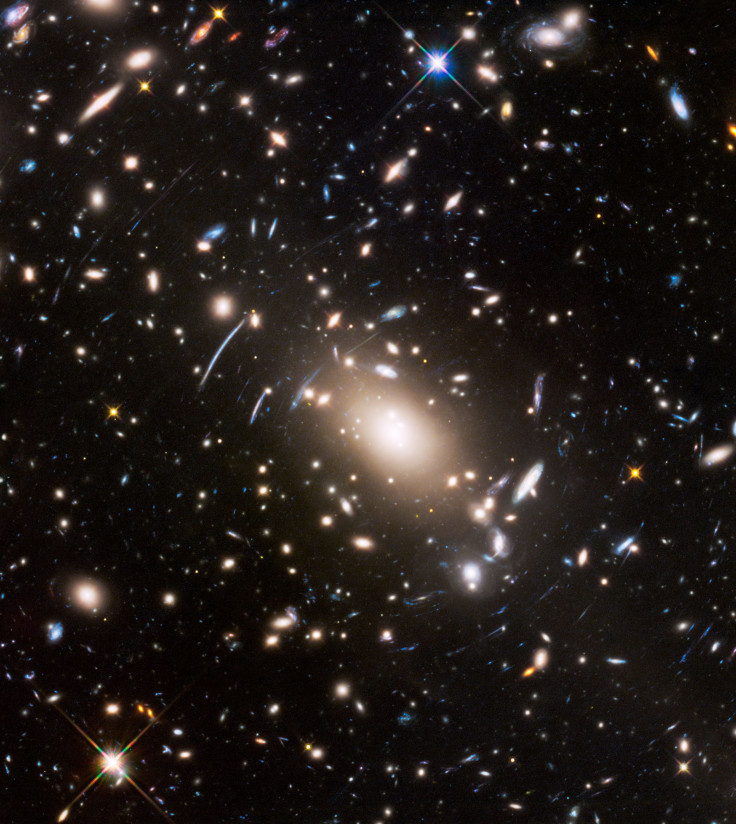Hubble Telescope Probes The Real Life ‘Final Frontier’ In A New Image Of Gravity-Warped Galaxies

“Space: the final frontier.” Words that will now forever be associated with the wildly successful science fiction franchise “Star Trek.” Just weeks ahead of the 50th anniversary of the original TV series and just one day before the release of the franchise’s latest movie “Star Trek Beyond,” scientists at NASA and the European Space Agency (ESA) have released a new image captured by the Hubble Space Telescope to mark the occasion.
“These are the stories of the Hubble Space Telescope. Its continuing mission, to explore strange new worlds and to boldly look where no telescope has looked before,” the ESA said in a statement.
The new image, released as part of the Frontier Fields Program, shows the distant galaxy cluster Abell S1063 as it was four billion years ago. However, staying true to its motto of “looking beyond,” Hubble also manages to capture galaxies that lie much farther in the same image — largely due to an intriguing phenomenon known as gravitational lensing.
As Einstein explains in his theory of general relativity, gravity warps the fabric of space-time. If an object is sufficiently massive, it can warp space-time to such an extent that the light being emitted by stars, galaxies and other celestial bodies behind it is bent. Therefore, while a normal lens refracts light to focus it elsewhere, a “gravitational lens” bends light.
The more massive an object, the stronger this lensing effect.
“This phenomenon allows Hubble to see galaxies that would otherwise be too small and faint to observe. This ‘warp field’ makes it possible to get a peek at the very first generation of galaxies. Already, an infant galaxy has been found in the field, as it looked 1 billion years after the big bang,” NASA said in the statement.
In addition, astronomers have also identified sixteen background galaxies whose light has been distorted by the cluster — something that would be key in mapping the distribution of both ordinary and dark matter.
“When ‘Star Trek’ was first broadcast in 1966, the largest telescopes on Earth could only see about halfway across the universe - the rest was uncharted territory. But Hubble's powerful vision has carried us into the true ‘final frontier,’” NASA said. “This frontier image provides a sneak peak of the early universe, and gives us a taste of what the James Webb Space Telescope will be capable of seeing in greater detail when it launches in 2018.”
© Copyright IBTimes 2024. All rights reserved.






















